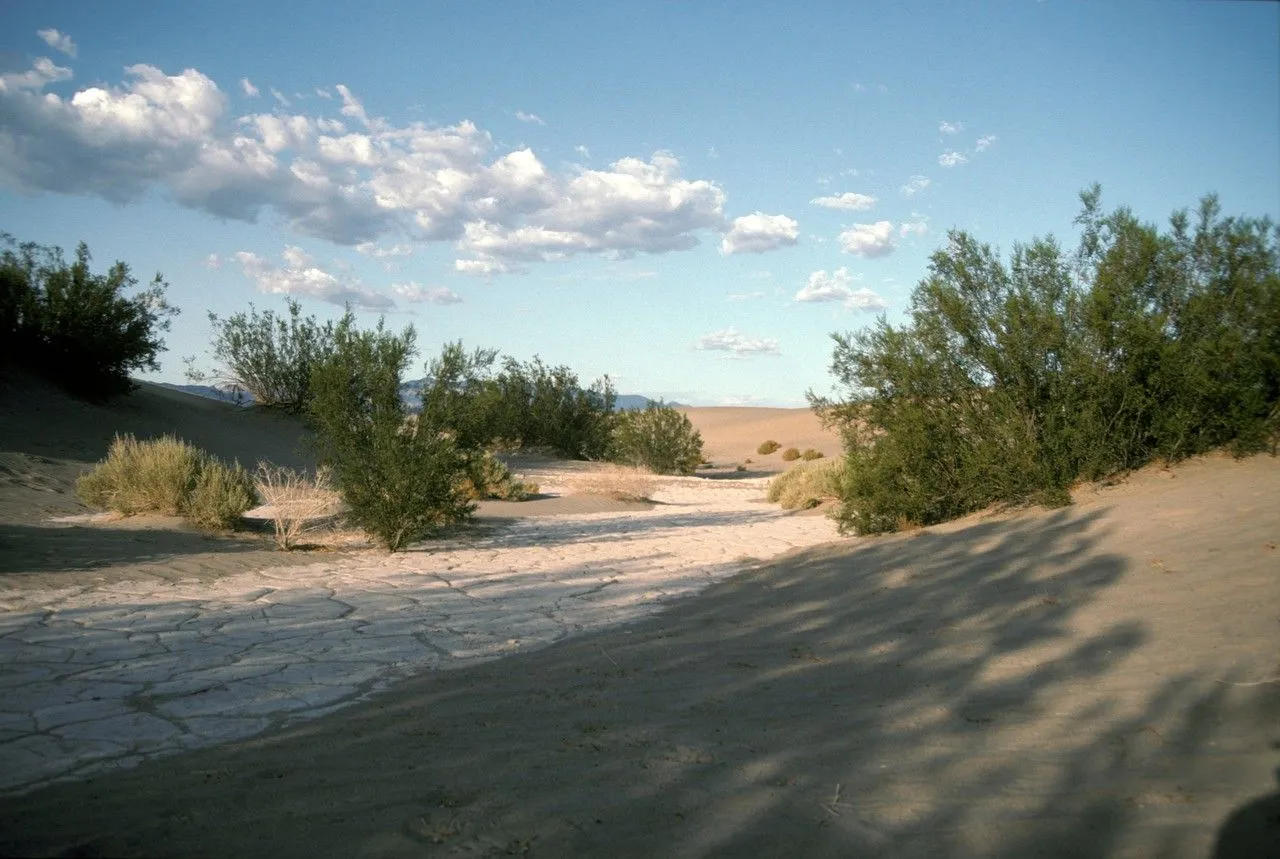
Author: (DC.) Coville
Bibliography: Contr. U.S. Natl. Herb. 4: 75 (1893)
Year: 1893
Status: accepted
Rank: species
Genus: Larrea
Vegetable: False
Observations: SW. & SC. U.S.A. to Mexico
The Creosote bush, scientifically known as Larrea tridentata, is a remarkable perennial shrub that epitomizes the adaptability and survival strategies of desert flora. Endemic to the arid regions of the Southwestern and South-central United States extending into Mexico, this plant thrives in some of the harshest environments on the continent.
This resilient member of the Zygophyllaceae family is well-known for its distinctive appearance and notable longevity. Creosote bushes boast small, resinous leaves that emit a characteristic, strong odor similar to creosote, especially after rain. This smell not only deters herbivores but also provides a measure of water conservation critical for survival in desert ecosystems. The foliage, typically dark green, is covered with a varnish-like coating that prevents excessive water loss.
The plant’s yellow flowers, blooming predominantly in spring, attract a variety of pollinators including bees and insects. Following pollination, the bush produces small fuzzy seed capsules ensuring the propagation of the species despite the challenging conditions.
Larrea tridentata has also been the subject of considerable scientific interest due to its incredible longevity. Some individuals, known as “King Clone,” have been estimated to live for nearly 12,000 years, making them some of the oldest living organisms on Earth. This extraordinary longevity is attributed to the plant’s ability to clone itself, allowing new shoots to emerge from the same root system over millennia.
In addition to its ecological significance, the Creosote bush has been utilized by indigenous cultures in the Southwest for various medicinal purposes. Its leaves and stems have been used to create teas and poultices for treating ailments from respiratory issues to skin conditions owing to their antiseptic properties.
Furthermore, the Creosote bush plays a crucial role in its ecosystem. It provides habitat and protection for a myriad of desert creatures, from insects to small mammals. The shading effect of the bush creates microsites that can support other less hardy plant species, fostering biodiversity within the desert landscape.
In summary, Larrea tridentata stands as an iconic representative of desert flora, embodying the resilience and adaptability required to flourish in such an inhospitable climate. Its ecological importance, historical use in traditional medicine, and sheer longevity make it a subject of ongoing fascination and study.
En: Creosote bush, Chaparral, Cresote, Governadora, Guamis, Creosotebush, Gobernadora, Greasewood, Hediondilla, Creosote, Creosote-bush
De: Kreosotstrauch, Keroststrauch
Es: Gobernadora, Hediodilla, Hediondo, Paloondo, Hediondilla
Sv: Kreosotbuske
Taken Jul 1, 1992 by Daniel Barthelemy (cc-by-nc)
Taken Jul 1, 1992 by Daniel Barthelemy (cc-by-nc)
Taken Jul 1, 1992 by Daniel Barthelemy (cc-by-nc)
Taken Jul 1, 1992 by Daniel Barthelemy (cc-by-nc)
Taken Feb 21, 2022 by John L Green (cc-by-sa)
© copyright of the Board of Trustees of the Royal Botanic Gardens, Kew.
© copyright of the Board of Trustees of the Royal Botanic Gardens, Kew.
© copyright of the Board of Trustees of the Royal Botanic Gardens, Kew.
Taken Aug 24, 2021 by Annemarie Ahrens-Stehle (cc-by-sa)
Taken Jun 1, 2022 by Liz Pucket (cc-by-sa)
Taken Mar 12, 2022 by Henry Broeska (cc-by-sa)
Taken Feb 21, 2022 by John L Green (cc-by-sa)
Taken Dec 30, 2021 by tonatiuh_1 (cc-by-sa)
Taken Jul 1, 1992 by Daniel Barthelemy (cc-by-nc)
Taken Feb 17, 2022 by Klara Law Maresova (cc-by-sa)
Taken May 26, 2021 by Fabienne fehrenbach (cc-by-sa)
Taken Jan 17, 2022 by Bradley Bruce (cc-by-sa)
Taken Oct 24, 2020 by Tr Ernesto (cc-by-sa)
Taken Apr 18, 2021 by jacques Gattepaille (cc-by-sa)
Growth habit>: Shrub
Family: Myrtaceae Author: (F.Muell.) K.D.Hill & L.A.S.Johnson Bibliography: Telopea 6: 402 (1995) Year: 1995 Status:…
Family: Rubiaceae Author: Pierre ex A.Froehner Bibliography: Notizbl. Bot. Gart. Berlin-Dahlem 1: 237 (1897) Year:…
Family: Sapindaceae Author: Koidz. Bibliography: J. Coll. Sci. Imp. Univ. Tokyo 32(1): 38 (1911) Year:…
Family: Asteraceae Author: A.Gray Bibliography: Pacif. Railr. Rep.: 107 (1857) Year: 1857 Status: accepted Rank:…
Family: Fabaceae Author: Medik. Bibliography: Vorles. Churpfälz. Phys.-Ökon. Ges. 2: 398 (1787) Year: 1787 Status:…
Family: Aspleniaceae Author: (Cav.) Alston Bibliography: Bull. Misc. Inform. Kew 1932: 309 (1932) Year: 1932…